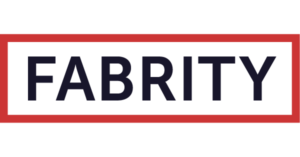Business analysis and UX design are two different fields of expertise that nevertheless overlap in some significant ways. Crucially, both these roles entail using research to advise the development team on the needs of the sponsor and end users. Our thesis here is that, since the roles of business analyst and UX researcher have become central to project teams, it is especially important to look at how projects are executed, particularly in the initial stages when sprint setup is underway key business goals are being defined. Thus, the BA and UXR become a kind of “advisory body” to the product owner, which increases the chance of success for a project run using agile methods.
Future evolution of SCRUM
It seems that in the future, a significant part of the business goals and shape of projects will be formed jointly by UX designers, who are in the field of research and consulting, and business analysts, who support product owners in SCRUM projects. This may include working with the sponsor to understand their business goals and objectives, as well as identifying opportunities for improvement and innovation. It may also involve gathering and analyzing data in order to better understand the needs and expectations of various stakeholders, as well as designing solutions to meet those needs in an efficient and cost-effective manner.
Such a configuration of teams, which include both BA and UX, often already exist in corporate managed projects. We expect that this will become more common in the future evolution of SCRUM. For a smaller SCRUM team, perhaps an independent software development team, this may require both of these roles to be combined in one person.
Defining the roles
What does a UX designer do? UX stands for user experience, and the objective of the design process is to create usable and enjoyable digital products. The focus of the UX specialist is on the “look and feel” of the product and how users interact with it. They apply their skills to conduct user research, and to design interactions and the visual aspect of the product. Their work necessitates cooperation with other designers, developers, and marketing professionals.
What does a business analyst do? Traditionally, the task of the BA is to help a company to improve operations by identifying inefficiencies and areas for improvement. This involves collecting and analyzing data that allows them to understand the current state of the company and provide recommendations. The ultimate objective is to use data analysis, management skills, and problem-solving to streamline operations and improve cost effectiveness. On a software development team, the BA may have the business analysis tool-kit to understand the needs and requirements of the sponsor and visualize them in the form of reports submitted to the product owner.
Common types of UX specialists
UX designers are responsible for creating user-centered designs for products and services, with the goal of improving the overall user experience. They use a variety of techniques, such as user research, prototyping, and usability testing to understand the needs and behaviors of users and to design interfaces and interactions that are intuitive, efficient, and satisfying. They are, however, not the only type of UX specialist.
UX researchers are responsible for conducting research to understand the needs and behaviors of users. They use a variety of research methods, such as interviews, surveys, focus groups, and field studies to gather data about users and then analyze that data to extract meaningful insights and inform the design of products and services.
UX writers are responsible for creating the language that users encounter when interacting with a product or service. They work to ensure that the language is clear, concise, and consistent and helps guide users through the product or service in a logical and intuitive way.
UX strategists are responsible for developing and implementing the overall UX strategy for a product or service. They work with cross-functional teams to understand the business goals and user needs and create a plan for designing and delivering a high-quality user experience.
Common types of business analysts
Systems analysts are responsible for analyzing the business needs of an organization and designing and implementing systems to meet those needs. They may work with a variety of technologies, including software, hardware, and networks to design and implement solutions that support the business.
Requirements analysts are responsible for defining and documenting the requirements for a project, including both functional and non-functional requirements. They work closely with stakeholders to understand the business needs and goals and ensure that the requirements reflect those needs.
Process analysts are responsible for analyzing the business processes of an organization and identifying opportunities for improvement. They may work with a variety of techniques, such as process mapping and process modeling, to understand how work is currently being done and to design more efficient and effective processes.
Data analysts are responsible for analyzing data to extract meaningful insights and inform business decisions. They use a variety of tools and techniques, such as statistical analysis and data visualization, to identify trends and patterns in data, and to provide recommendations based on their findings.
A UX designer on the development team
Agile software development and more specifically the SCRUM framework are now the go to methodologies for software development teams. One of the increasingly common trends in the evolution of SCRUM is to include a UX designer as one of the development team members, preferably from the very start of the SCRUM development process.
As we point out in our blog about the difference between UI and UX, one of those differences is precisely the fact that the UX designer is a part of the development team from the very beginning. After all, the whole point of the SCRUM development process is that every sprint goes through the whole journey—from planning to a complete functionality. Thus, the input of a UX designer is needed throughout the entire development process.
Business analysis in the SCRUM development process
In the traditional (some might say obsolete) waterfall planning model, the business analyst handles most of the planning process, but the role of the business analyst in the SCRUM framework may vary. Most commonly, it is taken up by the product owner, whose tasks are perhaps the most similar, although this puts a lot of work on the shoulders of one person. Under these circumstances, the traditional role of the product owner as an intermediary between the SCRUM team and the sponsor becomes more operational. Their tasks now include gathering information and formulating project requirements and translating them into the sprint backlog.
SCRUM team members by definition perform a variety of tasks and business analysis may be one of them. It should be noted, however, that not all of the business analyst’s tasks can be performed within the sprint cycle. Finally, sometimes BA is handled by a sort of intermediary between the product owner and the SCRUM master and their team, although this solution seems to be dictated more by corporate organizational issues than by its value to the SCRUM team. The SCRUM master role is in itself more that of a facilitator and should not be combined with any other role.
Within the SCRUM framework, business analysis may be a key component of the sprint process. During a sprint, business analysts and UX designers may work together to define the goals and requirements for a new product or feature, with UX most often adding data to business analysis. They also help design and test prototypes that meet those requirements. Here the BA often checks whether the design process is consistent with functional requirements.
The sprint process is designed to be flexible and iterative, enabling empowered SCRUM teams to quickly identify and address problems or issues that arise during the development process. But there is more to it: focusing on the goal, BA and UX work should be defined in the “zero sprint,” which defines goals, separate from their support as SCRUM team members in other sprints.
Similarities between the roles
Much can be said about the differences between these two roles: from the different job duties and requirements of BA and UX to their career trajectories and the different modes of communication of BA and UX specialists. There is, however, also a lot of overlap.
Starting with where the aforementioned career trajectories lead: to the core of the product development game – product strategy. More importantly, both roles rely on a data analysis tool-kit, which allows them to gather information about the needs and expectations of various stakeholders. They also both need to translate their findings into specific project proposals and solutions.
Finally, they both need to communicate these proposals clearly and cooperate with other specialists, including in a complex team environment in the SCRUM framework and in distributed teams, which are increasingly common in commercial product development, especially since the start of the pandemic.
In many cases, business analysts and UX designers work together on a project, with the business analysts helping to define the overall goals and objectives of the project and the UX designers helping to design the user experience and interactions that will help achieve those goals. For example, a business analyst might work with a UX designer to design a new e-commerce website that meets the needs of both the business and the customers. The business analyst might identify the key business requirements for the website, such as the need to support multiple payment methods, while the UX designer focuses on creating an intuitive and efficient shopping experience for the user.
Business analysts can bring a deep understanding of the business and its goals, while UX designers can bring expertise in creating user-centered designs that are intuitive and satisfying for the user. Together, they can help ensure that a project aligns with the overall goals and strategy of the organization and delivers value to both the business and its customers. But let’s go into more detail.
Steps in the BA process
Let’s take a look at what a typical process looks like in UX research and business analysis. The specific steps involved in business analysis may vary depending on the context and goals of a particular project, but there are some common steps that are often followed:
- Define the scope and objectives of the project: The first step in business analysis is to clearly define the scope and objectives of the project, including the business needs and problems that the project is intended to address.
- Conduct stakeholder analysis: Next, it is important to identify and analyze the stakeholders who will be impacted by the project, including customers, users, employees, and other key groups.
- Gather and analyze data: Business analysts often gather and analyze data from a variety of sources, including market research, customer feedback, and internal business data, to understand the needs and expectations of stakeholders.
- Define requirements: Based on the data and analysis gathered, business analysts define the requirements for the project, including functional, non-functional, and technical requirements.
- Design solutions: Business analysts may work with UX designers and other team members to design solutions that meet the defined requirements and address the identified business needs.
- Validate and test solutions: Before implementing a solution, it is important to validate and test it to ensure that it meets the needs of the business and the stakeholders.
- Implement and monitor the solution: Once a solution has been developed and tested, it can be implemented and monitored to ensure that it is meeting the intended business objectives.
- Review and continuous improvement: Sustaining complex software will require constant revaluation of previously introduced solutions. Business analysts often review and evaluate the performance of a solution over time and may recommend changes or improvements to ensure that it continues to meet the evolving needs of the business.
Steps in the UX process
The analogous steps in UX research, which could naturally also vary depending on project details, might look as follows:
- Define the research objectives: The first step in the UX research process is to define the research objectives, which should be based on the overall goals of the project and the questions that the research is intended to answer.
- Identify the target audience: Next, it is important to identify the target audience for the research, including the characteristics and behaviors of the users who will be participating in the study.
- Select research methods: Based on the research objectives and target audience, UX researchers will select the appropriate research methods to use, such as interviews, surveys, focus groups, usability testing, or field studies.
- Gather data: UX researchers will then gather data from the research, using techniques such as observation, interviews, or surveys to understand the needs and behaviors of the users.
- Analyze data: Once data has been gathered, it must be analyzed in order to extract meaningful insights and conclusions. This may involve coding and organizing the data, as well as using statistical or qualitative analysis techniques to identify patterns and trends.
- Communicate findings: The final step in the UX research process is to communicate the findings of the study to the appropriate stakeholders, such as the design team or the product owner. This may involve presenting the results in the form of a report or creating visualizations or other forms of presentation to make the findings more accessible and actionable.
Similarities once again
As you can see, the steps in business analysis and user experience research for software projects are very similar. They both require the defining of research objectives and using a research and analysis tool-kit to gather, study, and collate the data. Finally the results need to be translated into design objectives and communicated to team members. The resulting solutions need to be monitored and potentially updated as the product development game progresses.
This is a complicated process that requires complex technical work, but there are enough similarities that under the watchful eye of a professional SCRUM master, a single person might learn to perform both roles. This new role of project analysis should be a combination of business analysis and UX design. It is certainly possible for a single person to combine the roles of a business analyst and a UX designer, especially on smaller, less complex projects. In such cases, a person with the right technical skills and a strong background in both business analysis and UX design may be able to effectively identify and solve business problems to design user-centered solutions that meet the needs of both the business and the users.
However, in many cases, the scope and complexity of a project may require the expertise of multiple individuals with specialized skills in business analysis and UX design. “Often, external cells with mixed roles supporting the analysis process are required. This can be particularly important in larger organizations, on more complex projects, or in scaled SCRUM teams, where the needs of the business and the users may be more diverse and difficult to understand and communicate to all the parties involved.
Conclusion
Overall, we believe that a combination of business analysis and UX design skills can be very valuable in helping to create effective solutions to business problems. A knowledge of both frameworks—UX research and business analysis—is crucial. There is significant crossover between the skills of both roles, so good UX designers should know the basics of business analysis, while good business analysts should at least know the basics of the UX framework, especially in the field of research. Both roles should be present from the very start of the project as advisers to the product owner.









